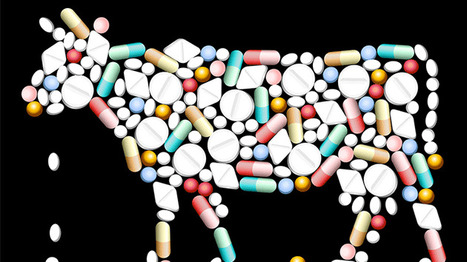Young U.S. Women Are The New Face Of Heroin Use
Young U.S. Women: New Face Of Heroin Use
Heroin use in the United States (U.S) like in other parts of the world has been predominantly men. The few women found in this category have been those in the inner city, rich and spoilt. However this is fast changing. Within this past decade heroin use has hit a staggering 62%. In 2005 heroin use was reportedly slightly over 1.6% in every 1000 Americans, aged 12 and over. In 2015 however the percentage went up somewhere above 2.6% per a similar number in U.S.
The rate of heroin use doubled that of men in a similar period. According to a report by the Centers for Disease Control and Prevention (CDC), the percentage gradually increased from a mere 0.8% back in the year 2002 to 1.6% women alone. According to the report, the face of heroin use has changed from a stern faced man in the city unexpectedly to a young beautiful woman in the suburb. The report also indicated heroin-related deaths have hit of 300 percent.

Increasing Heroin Use in Women a Result of Pain Killer Prescriptions
The report pointed out different groups in the U.S. that have never been known to use heroin have been lured into the same in more recent times. It indicates a leading group of increasingly heroin users are women, those with higher incomes and private insurance. In as much as the net of heroin use reportedly caught indiscriminately across gender and societal status, many experts agree women have become more vulnerable to the increasingly available substance. Dr Dalal Akoury of Integrative Addiction Institute notes there is more than a double increase in number of heroin-related cases of addictions among women than men lately as opposed to some years back.
The increase of heroin use among women has however been attributed to increased pain killer prescriptions for a number of related complicated medical conditions over time. Various experts argue this happened gradually over time. “I suspect it’s been a more of a gradual thing, because more women have been exposed to pain medication for various problems. They have developed first an opiate addiction then have moved on to heroin,” said Onsrud, a consultant on Addiction Services at the Mayo Clinic.
Form Heroin Task Force to Fight Increasing Use
Various authorities argue the war on heroin use has been in existence for some time, with a few successes however it has continued to increase. In La Crosse County, the officials noticed heroin use was getting out of hand and decided to face it head-on. They formed the little known La Crosse County Heroin Task Force.
“We noticed heroin use had increased as early as the year 2010-2011,” said Al Bliss, then the task force coordinator. However he noted even at that, a lot more still has to be done. “I think we’ve made some end roads at decreasing availability of heroin but it still remains a problem,” added Bliss.
The task force coordinator also said in order to curb the menacing heroin problem, communities needed to form programs more or less similar to the Heroin Task Force so as to get like-minded people working together at attaining a single determined goal. “We need to further educate the community in offering help, treatment, and preventive care; and to conduct a lot of awareness in order to address the comprehensive problem of drug abuse,” he said.

Substance Addiction Increasing Heroin Use
In a separate interview, Dr. Akoury echoed Mr. Bliss’s earlier observations; she said people suffering from substance abuse are more likely to form a habit of popping in pills. She added they are more susceptible to heroin use. A number of studies and medical reports also support this claim. One commonly cited study indicates alcohol and cigarette smokers have a higher chance of about 5 times their fellows who do not. The CDC report actually indicated 96% of heroin users used at least one more addictive drug. Also, that 61% of the heroin users used at least three more addictive substances.
In conclusion Dr. Frieden, director of CDC empathized with the current state of heroin use. He said: “It is heartbreaking to see injection drug use making a comeback in the U.S.” He said solving the heroin issue boils down to preventing addiction in the first place by hunting down the primary cause, which according to him were opioid prescriptions. “It also means; increasing access to rehabilitation including medications such as methadone or suboxone, cracking down on heroin sales, and increasing use of naloxone to reverse overdose. These are the traditional basics to deal with addiction, hence also key in combatting heroin use,” quickly added the CDC director
For the latest about heroin use in the U.S and the rest of the world please sign up for this year’s August Integrative Addiction Medicine Conference. http://www.integrativeaddiction2015.com is the link to catch with speakers lined up for the event among other possible attendants participants







 The environment
The environment Another example of microenvironment is that of antimicrobials in the mucosal surfaces of the
Another example of microenvironment is that of antimicrobials in the mucosal surfaces of the 






 The common adage that whatever you eat affects your health comes in handy here. we are supposed to be eating foods that help in building our bodies and laying a fortress that is not easily passed through by
The common adage that whatever you eat affects your health comes in handy here. we are supposed to be eating foods that help in building our bodies and laying a fortress that is not easily passed through by  In America alone antibiotic-resistant bacteria infect 2 million people every year. these infections leads to death of 23,000 Americans every year but this is nothing in comparison to the estimation of the
In America alone antibiotic-resistant bacteria infect 2 million people every year. these infections leads to death of 23,000 Americans every year but this is nothing in comparison to the estimation of the 











 Tips To Help You With Snoring At Night
Tips To Help You With Snoring At Night
 Offering Help To Sex Addiction Sufferers
Offering Help To Sex Addiction Sufferers
 The prefrontal cortex enables us to make rational, sound decisions. It also helps us to override impulsive urges that may trigger reactions that are not in the best of our interests. If acted upon, these impulses urges can cause us to act without thinking. It is the prefrontal cortex that helps you to even maintain sound relationships around you. Each and every day you may be confronted by this impulsive urge but it is the prefrontal cortex that helps us think rationally and help override the impulsive urges. Obviously, this ability to inhibit impulses is very helpful. It enables us to function well in society. It protects us from harm by allowing us to consider the consequences of our actions. However, when the pre-frontal cortex is not functioning correctly, the opposite occurs. Addiction causes changes to the prefrontal cortex. These changes account for two characteristics of addiction: impulsivity and compulsivity.
The prefrontal cortex enables us to make rational, sound decisions. It also helps us to override impulsive urges that may trigger reactions that are not in the best of our interests. If acted upon, these impulses urges can cause us to act without thinking. It is the prefrontal cortex that helps you to even maintain sound relationships around you. Each and every day you may be confronted by this impulsive urge but it is the prefrontal cortex that helps us think rationally and help override the impulsive urges. Obviously, this ability to inhibit impulses is very helpful. It enables us to function well in society. It protects us from harm by allowing us to consider the consequences of our actions. However, when the pre-frontal cortex is not functioning correctly, the opposite occurs. Addiction causes changes to the prefrontal cortex. These changes account for two characteristics of addiction: impulsivity and compulsivity. For this study the scientists employed a light-based genetic, or optogenetic, technique to activate or inhibit
For this study the scientists employed a light-based genetic, or optogenetic, technique to activate or inhibit 




